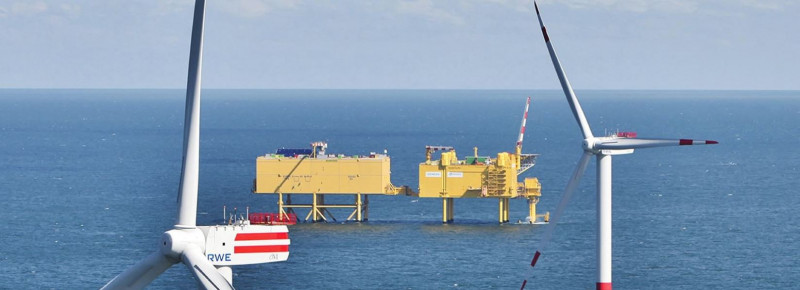
Offshore substations are the key link in the offshore grid connection, designed at getting maximum power from the wind turbines to shore. A key issue though has been how to minimise the costs of these critical balance of plant components, whilst ensuring high performance.
Under the first offshore wind roadmap to 2023, the Dutch plan required offshore substations to connect five 700 MW wind farms across three offshore wind farm zones. The key mandate for the transmission system operator, TenneT, was to generate cost savings at the same time. To do this, it has relied on a skilled local supply chain to ensure effective standardisation of design for its substation platforms.
With every platform being the same, when it comes to something like maintenance, people always know where to go because the same equipment is on every platform. It also means equipment such as transformers can be purchased more cost effectively under a framework agreement, delivered to the EPC contractor and simply mounted into the platform and connected.
Industry input
After a year- long consultation with stakeholders, HVAC substation platforms were chosen by TenneT to be the most appropriate choice. HVDC platforms may be a more cost effective option for the additional 7 GW of offshore wind connections planned under the second Dutch roadmap to 2030 due to the larger scale planned and increased distance to shore. Effective industry consultation also enabled TenneT to optimise the design of the platform, eliminating the need for elements such as heliports, and instead designing a lean platform based on feedback by project developers. The engineering, construction, transport, installation, connection, and testing of the substations is contracted out.
The top deck of each platform comes in at a weight of 3,350 tonnes with dimensions of 25 m high (including cable deck), 45m long and 20 m wide. The jacket foundation structure for the platform weighs 2900 tonnes and is 50 m high (at a water depth of 30 m), 28 m long and 20 m wide.
The Dutch Approach
The TenneT platforms are connected to the national Extra High Voltage grid with two 220 kV export cables per platform. Each cable has a capacity for 350 MW, which means these new substation platforms will have a capacity of 700 MW, enabling them to cope with the output from each wind farm individually. However, in a world first, the cables’ so-called “dynamic capacity” will be utilised. This means that a single cable can be temporarily subjected to a load of up to 380 MW. Meanwhile, 66 kV inter-array cables are used to connect wind turbines to the platforms.
TenneT brings the offshore wind energy onshore via the 220 kV cables to a high voltage substation, with electricity then fed into the national 380 kV high voltage grid (transformers are used to convert to the voltage level from 220 kV to 380 kV). From there, the wind energy is distributed to households across the country.
How can we help?
Get in touch with us! Are you interested to learn more about the Dutch Approach? Feel free to contact us and we are happy to tell you more!
